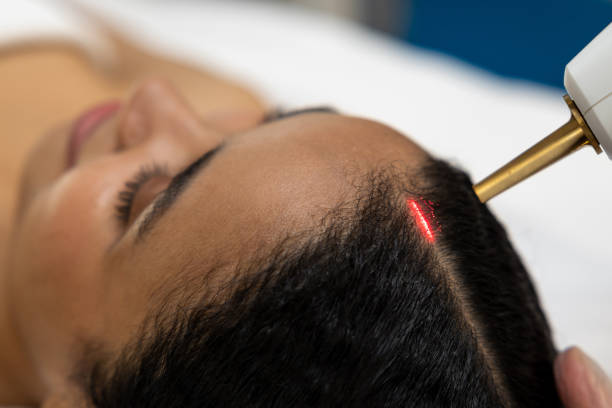
Nobody likes losing hair.
Thinning hair, receding hairlines, pattern baldness - all these conditions can be distressing. We feel less attractive, we feel older, and sometimes we feel like there’s nothing we can do! While most of us will experience some degree of thinning or balding as we age, individuals with alopecia areata and cancer-related alopecia may experience significant hair loss.
Thankfully, advances in science may be able to help. If you’re experiencing alopecia or worried about natural hair loss as you age, low-level light therapy could be your savior!
RELATED: Elevate Your Look: 10 Styling Hacks for Alopecia
Understanding Alopecia
Generally speaking, the term alopecia refers to any kind of hair loss. The causes of alopecia are varied. Some people inherit a ‘baldness gene,’ while others do not.
In many cases, alopecia is just part of aging. Fluctuations in your hormones, medical concerns, and even some medications can also contribute to hair loss or alopecia. While most prevalent in men, many women experience these issues as well.
However, alopecia areata and cancer-related alopecia are different. First off, alopecia areata is an autoimmune disorder where your immune system attacks your hair follicles, causing you to lose patches of hair. Typically starting in kids and young adults, alopecia areata may cause sudden and noticeable round bald patches to develop.
Alopecia areata does not discriminate based on age, race, or gender. It can occur wherever hair grows on the body.
Unlike alopecia areata, cancer-related alopecia only affects individuals with cancer or undergoing cancer treatments. Blood cancers are most likely to cause this kind of alopecia, but more often, the hair loss is caused by chemotherapy and radiation.
But here’s the good news! With effective treatments, your hair can regrow or even stop falling out entirely. Low-level light therapy is one of those treatments.
How Low-Level Light Therapy Can Treat Alopecia
Low-Level Laser (Light) Therapy (LLLT) may just be the cutting-edge solution to alopecia you seek. Not to mention, a safer alternative to the only two FDA-approved drugs today, finasteride and minoxidil.
With LLLT, the area of hair loss is exposed to low levels of light. That light then stimulates cells in your scalp (or wherever) to promote hair growth. Depending on your procedure, LLLT may use certain wavelengths such as red or infrared.
The best part is, it’s very safe!
Turns out LLLT has been used in all kinds of medical conditions. With a track record of over five decades, LLLT causes very few severe side effects. Mice studies have found that LLLT promotes hair growth in both cases of alopecia areata and chemo-related alopecia. Even better, clinical trials in humans have found improved hair growth for both men and women.
What Makes LLLT Effective?
If you’re wondering what exactly these lasers or lights do to your hair loss, the answer isn’t entirely known. That said, researchers believe that low-level exposure helps stimulate stem cells in your outer layer of skin, the epidermis. From there, it’s believed that your hair follicles enter a stage known as the anagen phase.
Your hair goes through four phases, and the anagen phase is the primary growth phase. Other phases, such as the telogen and exogen phases, are where your hair either rests or sheds.
Thanks to LLLT stimulation, your hair follicles are stimulated to push out hair. Weakened or less active cells begin to churn out growth, which can help you lose those bald spots! Overall, LLLT has shown effectiveness in treating all forms of alopecia, including androgenetic alopecia, which is a very common form of hair loss in men and women.
So, if you’re worried about hair loss and looking to turn back the clock and reclaim your youthful look, LLLT may help. As always, speak with a specialist and understand the best treatment options for you. While there are no miracle cures, LLLT represents a very positive trend for the future!









